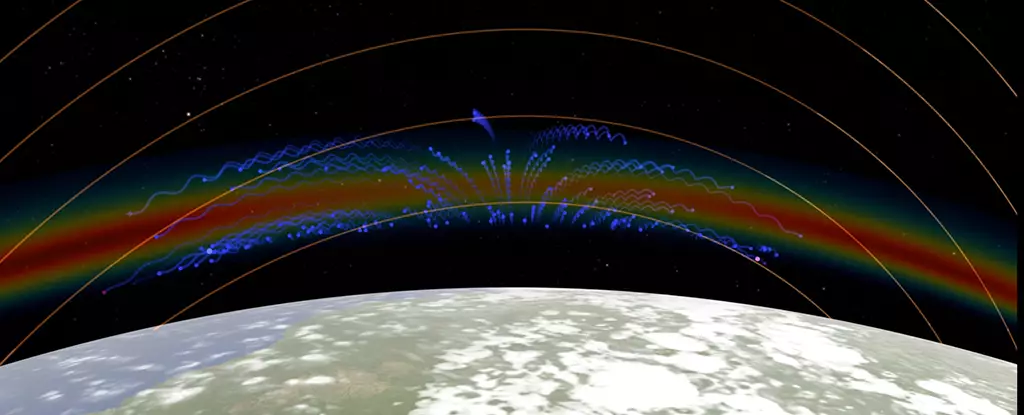NASA scientists have recently made a groundbreaking discovery in the ionosphere, shedding light on peculiar shapes that have been detected using the Global-scale Observations of the Limb and Disk (GOLD) imaging instrument. This revelation offers us a closer look at the ionosphere, a region of Earth’s atmosphere located approximately 48–965 kilometers (30–600 miles) above the Earth’s surface. The ionosphere becomes electrically charged during the day when sunlight interacts with it, forming plasma bands of charged particles that are influenced by Earth’s magnetic field, resulting in the creation of plasma shapes such as X and C.
One of the most intriguing findings is the emergence of unexpected X and C-shaped plasma formations during so-called ‘quiet times,’ challenging previous assumptions that merging crests only occurred during geomagnetically disturbed conditions. This suggests that more localized factors are at play, potentially pulling the plasma downwards from the lower atmosphere. Additionally, the appearance of C-shaped and reverse C-shaped bubbles in the plasma has puzzled scientists, as these shapes are believed to be shaped by Earth’s winds. GOLD observations have revealed these Cs forming in close proximity, indicating the involvement of localized factors like wind shear or tornadoes.
The ionosphere plays a crucial role in enabling radio waves to travel over long distances, making discoveries in this field essential for improving our understanding of radio and GPS operations. Disruptions in the ionosphere, such as the unusual shapes observed by NASA scientists, could potentially impact communication and navigation infrastructure. As researchers strive to delve deeper into these phenomena, it becomes evident that advancements in technology and scientific research are vital in unraveling the mysteries of Earth and the Universe.
The discovery of diverse plasma shapes in close proximity challenges our current understanding of atmospheric dynamics, highlighting the complexity of our environment. As astrophysicist Jeffrey Klenzing from NASA’s Goddard Space Flight Center notes, the presence of distinct plasma bubbles in such proximity underscores the intricate and evolving nature of Earth’s atmosphere. By constantly pushing the boundaries of scientific exploration, we gain valuable insights into the dynamics of our planet and the Universe at large.


Leave a Reply